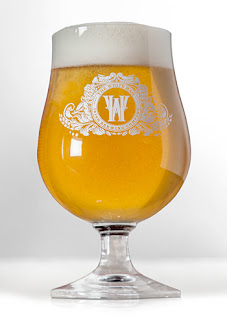CorkBillyBeers #54
Craft with Kinnegar and Weihenstephaner
*********************
Kinnegar Devil’s Backbone Amber Ale, 4.9% ABV, 500 ml bottle O’Donovan’s
Amber’s the colour for sure, a dark amber at that. The head is off-white and not for hanging about (at least when poured from the bottle). Lots of fizz in the haze.
The first sip introduces you to its chocolate/caramel backbone and you realise this is a serious drink, pretty robust too, a full-bodied drink you can’t ignore. Dark fruit flavours on the palate, a very satisfying bitterness as well (hops are a mix of European and American) and then there’s a lip-smacking dry finish to boot.
The label indicates amber ale and you are thinking American. But notes on their website say it is known as a refreshing contemporary take on a traditional Irish red. And a pretty good take it is.
Versatile with food and equally enjoyable on its own… full bodied and full flavoured….just the right amount of spice and sweetness…Very enjoyable. Very Highly Recommended.
Label notes suggest pouring this naturally carbonated beer into a glass, leaving any natural sediment at the bottom of the bottle.
The Devil's Backbone is a local beauty spot, that changes as the seasons and the sunlight change. ...
Geek Bits
STYLE: Amber / Red
COLOUR: Deep red
HOPS: American/European
AVAILABILITY: Year-round
Format: 500ML bottle • 440ML can
30L steel keg (domestic) • 30L/20L kev keg (export).\
*********************
Weihenstephaner Kristall Weissbier, 5.4% ABV, 500 ml bottle O’Donovan’s
A World Champion - three times in a row. That third accolade set off great scenes of celebration for the German brewer Weihenstephaner as their Kristall Weissbier (bottle version) was declared Gold winner again at this year’s AIBA.
“The subtle banana notes, the refreshing effervescence, and the nobly filtered appearance in the glass completely convinced the jury”. And they convince me also! That golden colour and all those bubbles send an Invitation that is irresistible.
The brewery’s full title is Bavarian State Brewery Weihenstephan and this is their only top-fermented beer brewed that is not cloudy. The clarity is achieved through filtration.
That clarity is topped with a fine compact foam that stays around as the fountains of bubbles rise. And of course, you notice those banana and clove notes in both the aromas and on the journey through the palate.
Fresh citrus aromas are also evident in the flavour, while the fine bubbles give a pleasing effervescence. Cinnamon and clove on the palate, with a good full mouthfeel. Complex long finish all with that second glass appeal.
By the way, if you haven’t tried wheat beer, this crisp and clean champion is a good one to start with. Disappointing that this was pretty well past its BB date but a tribute to the brewers that it is still in such good nick.
******
*********************
Weihenstephaner Hefe Weissbier, 5.4% ABV, 500 ml bottle Bradleys
It has a light gold colour, hazy, with a fluffy pillowy head. Typical clove aromas and banana flavours. Superb refreshing flavours and a delight on the palate along with an excellent dry finish.
This well-balanced beer with its light creamy character reminds me of why I so enjoyed wheat beer early on but wheat beers are in a minority in Ireland and you don’t come across them that often. This is a classic indeed. As they say: This premium, naturally cloudy, pale amber wheat beer is truly a feast for the senses. They add: ” …a veritable classic – and the star of our beer ensemble…. It is the ideal reward at the end of a long day.”
”
This Weihenstephaner, as is the Kristall, is made according to the Bavarian Purity Law of 1516. Drink at 6-8 degrees. It has a mild IBU count of 14 and they recommend pairing it with Obazda (a Bavarian cheese spread) - I’m sure we could rustle up something similar around here. What we cannot magic up is a brewery as old as Weihenstephaner - they’ve been at it since 1040! Other food pairings noted are with fish and seafood, and especially with the traditional Bavarian veal sausage.
While the Kristall is impressive and has racked up the awards, this is regarded as the star by the brewery. They obviously know their stuff and I’d go with that (not that means leaving Kristall behind). As mentioned earlier, if you are making a start in the wheat beer style, then make the Kristall your first step!





















